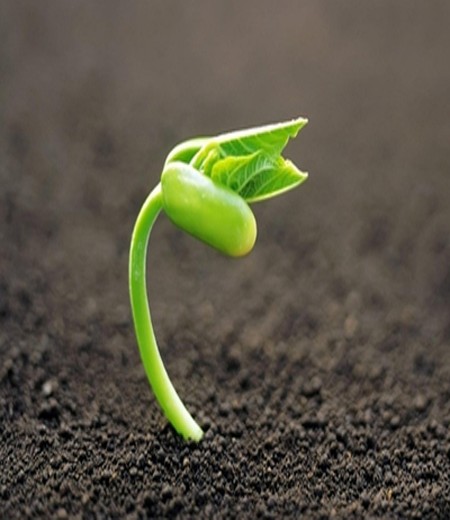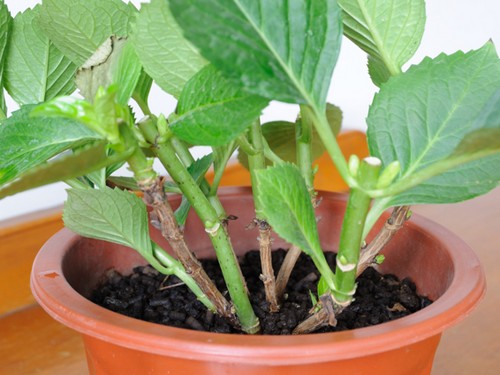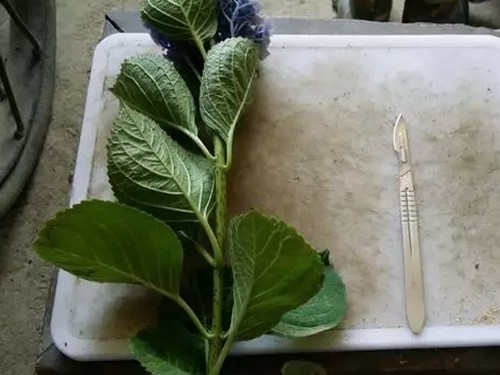The method of propagation of Hydrangea by bud cutting
Hydrangea is the so-called fighting ball and hydrangea. This shade-tolerant ornamental plant usually propagates by cutting. The reproduction coefficient of this method is low. In order to propagate hydrangea rapidly, this paper introduces the method of propagating hydrangea with high propagation coefficient and bud insertion.

In spring, the newly trimmed hydrangea is managed in a place of about 25 ℃. In less than half a month, many buds will grow on the plant. At this time, prepare several flowerpots or seedlings filled with plain sand, leaving behind the buds that are going to grow into branches in the future. as soon as the rest of the buds grow to about 2 centimeters, you can break them off and insert them into the prepared flowerpots or seedlings. Because the buds on the plant cannot grow as big at the same time, it is necessary to rake the buds that are not big enough and leave them on the branches to continue to grow.
Don't break it off and cut it when it's long enough. Every time the cuttage shoots, it is necessary to spray water immediately. Put the flowerpot or seedling with hydrangea cuttings in the bright place of direct sunlight, keep the ambient temperature between 15 ℃ and 25 ℃, spray water twice a day, if there are conditions, it is best to put the flowerpot or seedling shallow in a small shed covered with colorless plastic film, which can maintain high air humidity and is very helpful to increase the survival rate.
After 4 weeks, most of the tender bud tracks of Hydrangea will take root, and when the leaves of all Hydrangea cuttings expand, it shows that their roots have been able to ensure their independent growth. At this time, they can be planted separately and managed normally.
Time: 2019-06-11 Click:
- Prev

Cutting method of potted eight Immortals / Hydrangea
Hydrangea is poisonous and has five special tastes. Accidental eating can lead to colic, abdominal pain, diarrhea, shortness of breath, vomiting, hematochezia and other toxic symptoms. Therefore, it is better not to put it indoors, nor do you want to pick and play with the beauty of flowers. If the family buys hydrangea potted plants
- Next

How to cut eight Immortals / Hydrangea cuttings
Hydrangea can be propagated by split-plant method, strip-pressing method and cutting method, but generally adopt cutting method. For cuttings in early spring, one-year-old ungerminated branches can be used as cuttings, and new branches of the same year can be used as cuttings from May to August. The cuttings are about 10 cm long and have 2-3 nodes. The cutting substrate is plain sand or vermiculite.
Related
- Fuxing push coffee new agricultural production and marketing class: lack of small-scale processing plants
- Jujube rice field leisure farm deep ploughing Yilan for five years to create a space for organic food and play
- Nongyu Farm-A trial of organic papaya for brave women with advanced technology
- Four points for attention in the prevention and control of diseases and insect pests of edible fungi
- How to add nutrient solution to Edible Fungi
- Is there any good way to control edible fungus mites?
- Open Inoculation Technology of Edible Fungi
- Is there any clever way to use fertilizer for edible fungus in winter?
- What agents are used to kill the pathogens of edible fungi in the mushroom shed?
- Rapid drying of Edible Fungi

